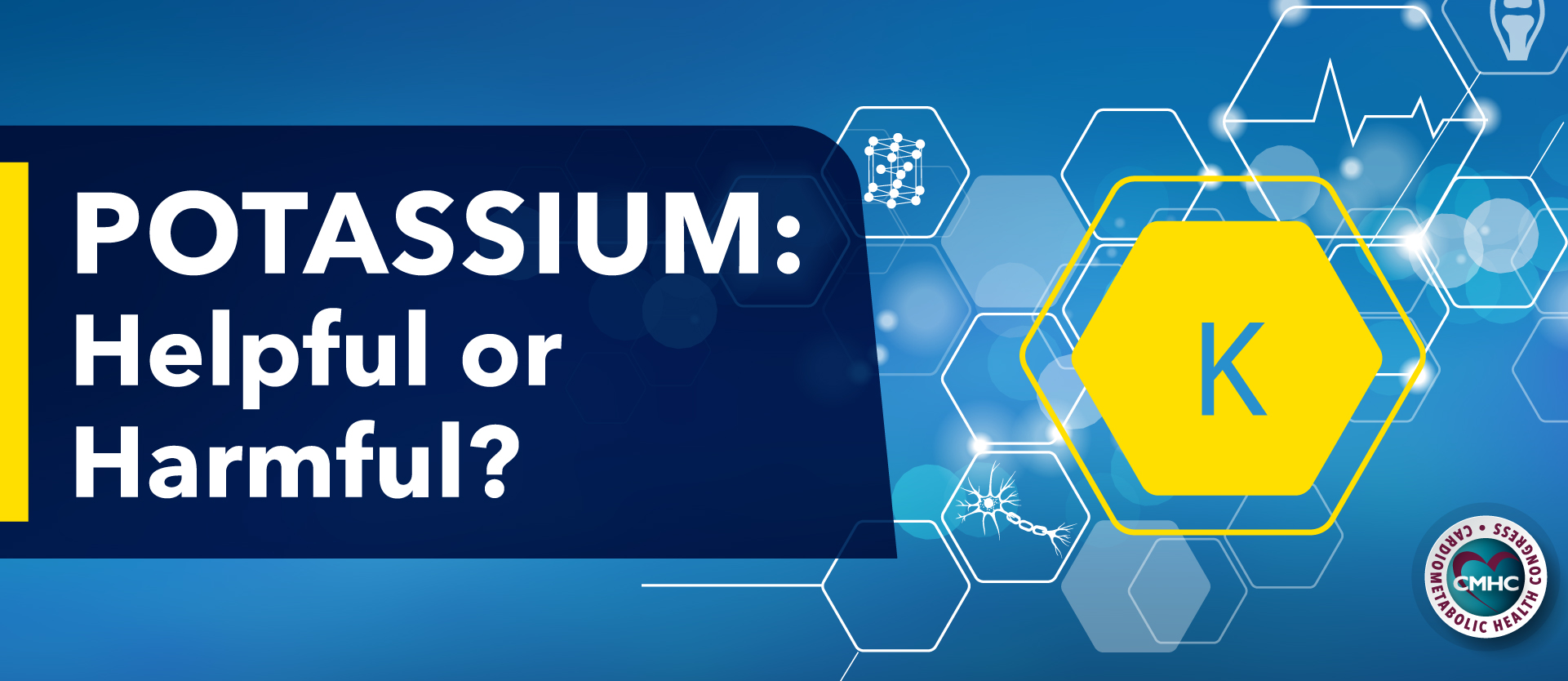Potassium-rich foods like bananas, avocados, tomatoes, and squash are generally regarded as healthful, especially for lowering blood pressure and improving cardiovascular health. However, patients with chronic kidney disease may be instructed to limit these foods because of the potential for harmful levels of potassium build-up that impaired kidneys cannot properly filter. Patients and providers alike may be confused about potassium guidelines, especially in patients with comorbid cardiovascular and kidney disease.
Helpful potassium
Potassium is a mineral and electrolyte that plays an important role in muscle function. Since the heart is arguably the most important muscle in the body, maintaining healthy potassium levels can improve cardiovascular health. Scientific reviews also have found that eating high amounts of potassium can lower blood pressure and reduce stroke risk. This is likely because the kidneys process most of the potassium you get through diet. If working correctly, they use it to remove excess sodium, helping lower your blood pressure and reduce related problems.
Harmful potassium
Despite the health benefits potassium has for most people, patients with chronic kidney disease (CKD) may be at greater risk when they consume potassium-rich foods. As kidney function declines, it is harder for kidneys to filter potassium from the blood effectively, leading to a build-up of potassium; a condition called hyperkalemia. At dangerously high levels, this excess potassium can lead to serious health problems, heart attack, or death. To avoid complications from high potassium levels, the following tips from the National Kidney Foundation can help providers identify and care for patients that may be at risk for hyperkalemia:
- Establish if the patient has CKD and, if so, at which stage. Hyperkalemia occurs in up to half of people with CKD. It is seen primarily in patients with comorbid diabetes or cardiovascular disease, transplant recipients, or those that are on certain medications. Patients in stage 4 or 5 of CKD are at the highest risk because a decline in kidney function causes potassium build-up in the blood. Providers should screen patients with these risk factors for hyperkalemia upon intake and then annually.
- Determine if the patient is on any medications that increase potassium. Although dietary sources of potassium can have adverse effects, the largest concern in clinical practice is drug-induced hyperkalemia. Angiotensin-converting enzyme (ACE) inhibitors and angiotensin receptor blockers (ARBs), as well as diuretics, beta-blockers, NSAIDs, calcineurin inhibitors, dietary supplements, heparin, and trimethoprim are the main culprits of high potassium outside of food sources.
- Measure the patient’s current potassium levels to determine if there is an imbalance. Blood potassium levels between 3.5 and 5.0 millimoles per liter (mmol/L) are considered normal; a result of more than 5.0 mmol/L indicates high potassium. The clinical severity of hyperkalemia is determined by considering factors such as onset speed, severity, and other clinical findings.
- Determine if the patient is exhibiting any symptoms of hyperkalemia. There are often no warning signs of high potassium, so it’s very important for providers to rely on lab measures of potassium rather than patient-reported symptoms. When symptoms occur, they include heart palpitations, nausea, weakness, or a tingling in the extremities (paresthesia) that are nonspecific and often mistaken for signs of other conditions.
- If hyperkalemia is diagnosed – treat and manage. Stabilizing heart function, shifting potassium using an intravenous treatment of insulin, glucose, albuterol, and sodium bicarbonate, and removing potassium with potassium binders, diuretics, or dialysis may be necessary to treat acute hyperkalemia. Managing chronic hyperkalemia involves surveillance through routine lab monitoring, dietary counseling, and modification to limit high-potassium foods, a review of medications, and prescribing a potassium-lowering medication, if necessary.
- Consider potassium-lowering medication. Patiromer, approved by the U.S. Food and Drug Administration (FDA) in 2015, reduces potassium by binding it to the gastrointestinal tract and should be used only as a non-emergency treatment. Sodium zirconium cyclosilicate works in a similar fashion and was approved by the FDA to treat hyperkalemia in 2018.
Key Takeaway
Most people can enjoy potassium-rich foods without concern and will even benefit from the cardiovascular effects. Patients in later stages of CKD, however, may need to switch to a lower-potassium diet due to hyperkalemia. Potassium intake recommendations will vary based on patient labs, overall health, comorbidities, and many other factors. Instructing patients on which foods contain high and low levels of potassium, as well as scheduling an appointment with a nutritionist, can help them make appropriate dietary choices.
Sources:


















